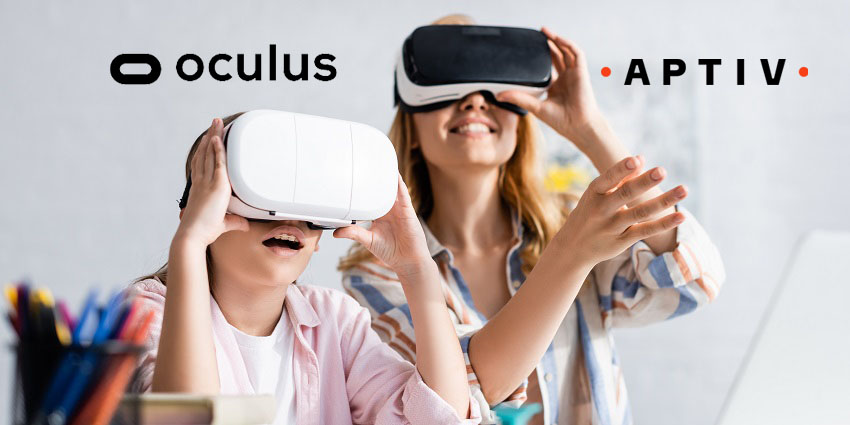The power of Extended Reality technology for education isn’t just evident in the traditional school and university landscape. Increasingly, large companies around the world are discovering the value of immersive tools when it comes to bringing powerful training opportunities to professionals.
With XR tools, companies can empower staff members to work with complex machines and equipment, as well as providing them with the skills they need to perform day-to-day tasks. The right solutions not only accelerate training, but they can also allow for a more engaging experience for students in a professional space.
Aptiv, a glocal technology leader, knew it needed to embrace the best possible innovations in the training environment to support team members. The company turned to The Leadership Network and Oculus (from Meta) to implement a new Virtual Reality solution.
Exploring Lean Six Sigma Processes in Business
Aptiv is a market-leading company in the technology landscape, responsible for creating a host of innovations intended to make vehicles smarter, and safer. The company is also responsible for developing some of the signature technology for the modern automotive landscape, such as the neural net or “brain” for autonomous vehicles.
Aptiv brings its strong focus on innovation not just to its product development strategies, but also to the training opportunities it offers to employees. In 2019, James Murray, implemented a 3-year timeline to bring new “Lean Six Sigma” processes into the supply chain of the Aptiv Safety and User Experience business.
With around 13,000 employees to train across 11 manufacturing facilities and 15 worldwide offices, the pair knew they needed an innovative approach to education.
While the Operational Excellence team had previously preferred to deliver training in-person, they knew this process was time-consuming, and resource-intensive. It would have been almost impossible to deliver the training in-person at the right speed, while maintaining a focus on quality.
Implementing Virtual Reality Training
To accelerate and enhance the training process, Murray turned to “The Leadership Network” (TLN), a popular training provider in the VR space. According to Murray, he had discovered people trained in VR generally recall as much as 75% of the material covered within 24 hours – more than anything achieved by traditional e-learning.
For the team, VR appeared as the next best option compared to being in the same room as employees for training. With virtual reality, the company could give team members the tools required to collaborate and learn at scale, in an engaging environment. Aptiv adopted the Leadership Network’s “GEMBA” enterprise program, and began working on its own lean content to train both hourly workers and managers on lean processes.
The hands-on educational solution ensures Aptiv employees could continue to learn more efficiently, even during the challenges of the pandemic. Together, TLN and Aptiv decided to build the lean training content on the Oculus for Business platform, by Meta. The company chose Oculus because they wanted a solution that could work anywhere, and came with a strong support system.
The Oculus for Business ecosystem also offered access to an easy-to-use headset solution. When compared to other options on the market, the Oculus appeared to be the easiest and most compelling solution for wide-scale adoption. The Oculus Quest was simple, convenient, and avoided the complexity and cables associated with other devices.
According to the team, the Oculus Quest headset was much easier to install than competing products, and came with simple handheld controls. The solution could also continue to work efficiently for several hours with batteries. The team also found deployment to be simpler with Oculus for Business too.
Bringing Oculus Technology to the Team
After discovering the benefits of Oculus as a convenient and simple tool, the firm started rolling out training sessions across Mexico, Portugal, and Poland remotely from Scotland. The pair noted the ability to implement and manage training sessions remotely was a huge advantage for Aptiv, even before the pandemic emerged. The team could ensure the initial experiences offered to staff were consistent and high-quality, anywhere in the world.
To aid with the rollout, TLN built an analytics and assessments dashboard into GEMBA, to help see where individual staff members might be struggling with the courses. According to TLN, the Oculus technology was fantastic at making learning as seamless as possible. Trainees could pick up a headset and instantly become immersed in the experience.
The intuitive design of the controllers and headset also meant the technology never felt intimating to users. Instead, it offered an inviting and exciting experience, even for those who hadn’t experienced VR before. This ensures teams can easily review Safety, Delivery, Productivity, Inventory, and Quality metrics together in a structured way, from anywhere.
Building a Future in VR
Today, Aptiv’s team consists of thousands of dedicated factory employees, all highly skilled in their work. These staff members are proud to be part of a company committed to making the world a safer place by reducing vehicle-related fatalities and injuries. Going forward, the firm is looking forward to extending VR training to all employees, boosting creativity and performance.
Murray even envisions VR being a powerful tool for employee onboarding in future too. He’s looking forward to an environment where the company can provide an introduction on lean training and company values to every new candidate joining the team.







